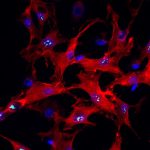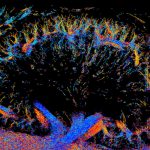The traditional route to test for a possible genetic disease involves a physician determining what they believe their patient might have. Then, the individual genes for those diseases are tested one by one to discover whether the patient has that condition. When each gene is tested individually, it is called a diagnostic odyssey. The process is expensive and can take years to complete because, at birth, a child might not present any signs of a genetic disease.
Some genetic diseases, like down syndrome, cystic fibrosis, and sickle cell anemia, are easily recognizable, so specific genetic tests can be ordered to diagnose patients. Yet, when young patients show signs of less recognizable genetic disease — usually genetic diseases present in the pediatric population — there are two avenues to diagnose them.
“It’s a roller coaster for families,” said Ed Smith, M.S., M.B.A., director of UPMC Clinical Genomics Laboratory within UPMC Magee-Womens Hospital, as well as three other UPMC labs at Magee that perform the genetics and genomics testing. “With 20,000 genes in the human genome, the variety of potential abnormalities is endless. Some genetic diseases aren’t curable but having certainty can still bring peace.”
By looking at the coding region in the DNA, which contains the genetic material where diseases sometimes manifest, whole exome sequencing tests the entire human genome. The human genome includes every single one of a patient’s genes, allowing the care team to find a diagnosis for a genetic disease without having to isolate the gene in advance. As of 2020, exome sequencing is offered through the labs at UPMC Magee, which reduces the costs of sending samples to external labs and keeps the entire process within the same system.
Before a patient consents to whole exome sequencing, a UPMC genetic counselor must review the ramifications of the test with their family. Since the test requires a DNA sample, a family could discover non-paternity or end up learning that their child has another disease or unrelated condition that will appear later in their adult life.
“You might get valuable information, but the timing isn’t always good,” said Smith. “You could find out that a 3-year-old patient will be at an increased risk for breast cancer in her thirties, so you find clinically important things unrelated to why the child was referred for testing in the first place.”
Alex Yatsenko, M.D., Ph.D., director of Clinical Genomics at UPMC, looks forward to improving the costs and efficiency of whole exome sequencing as the field grows. Although sequencing the whole exome can be costly, it’s worthwhile when it’s needed and, with prior authorization, covered by many insurers, including UPMC Health Plan.
Even for physicians, whole exome sequencing has required new processes. Physicians must describe their patients’ symptoms to the UPMC genetics and genomics team using a number system called Human Phenotype Ontology (HPO) terms when referring patients for genetic testing. HPO terms standardize symptom explanations, instead of doctors writing their own descriptions, and the software that the genetics lab uses takes HPO terms and associates genetic changes to the diseases.
“We’re bringing a digital revolution to UPMC, too,” said Yatsenko.
To learn more about genetic sequencing available at UPMC Magee-Womens Hospital, click here.









